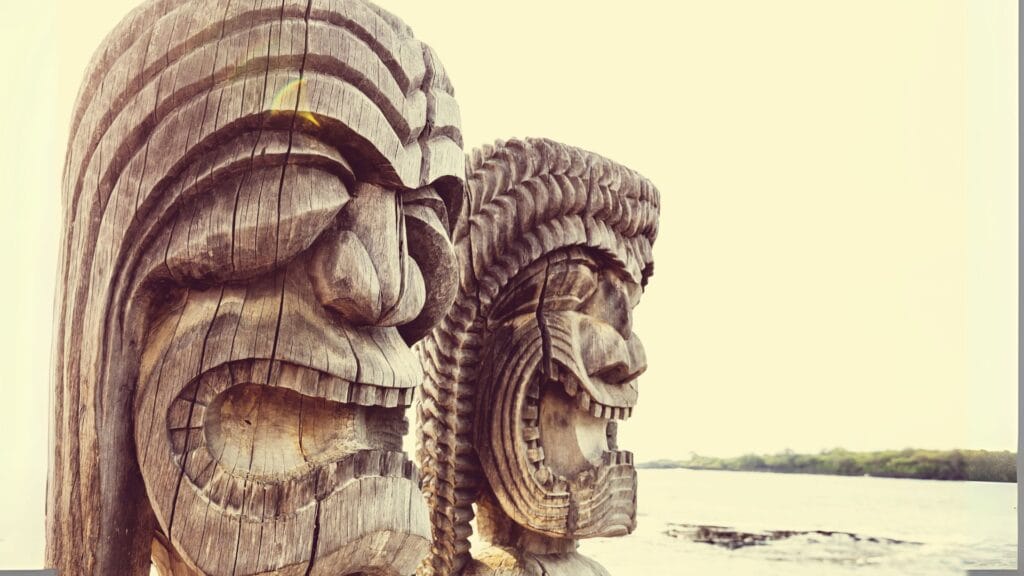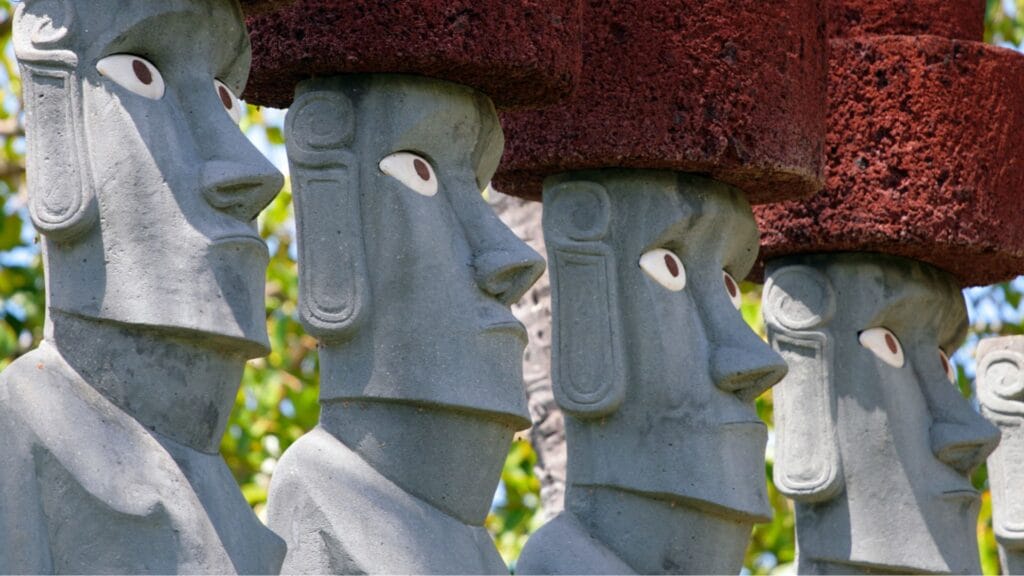In Hawaii, the teaching of Huna was originally called Ho’omana. The word “H’oo” means to make and “Mana” means energy. (it means to make life energy).
The world knows Huna in its current form thanks to two book authors: Max Freedom Long and Serge Kahili King.
The word Huna was used by M.F. Long to describe the shamanic knowledge of Hawaiians, who were reluctant to share information about their own practice.
People using secret knowledge were called Kahunas, meaning guardians of the secret.
Hence, probably Max Freedom Long borrowed the name Huna.
What does the word mana mean?
The word “Mana” means life energy. Equivalent to Ki (as in Aikido), Chi (as in Tai Chi), or Shakti or Prana in Sanskrit. You can use another word you prefer, meaning Life Force Energy. Hawaiians call it Mana. Together, the word Ho’omana means empowerment or strengthening.

Kahunas knew that all power and all strength emanates from the One, the source. All life, all energy, which in Hawaii was called I’o. At that time, the same knowledge was taught everywhere on the planet. Today, only remnants of this system have survived worldwide.
Huna as a system of ancient knowledge.
After publishing his first book, Max Freedom Long received a letter from an English journalist, William Reginald Stewart. The journalist spent the end of the 19th century as a researcher in North Africa.
During his travels, he befriended and was later accepted by an Amazigh healer, or Kuahini. In his letter, he explained that in Recovering the Ancient Magic, Long described the same magic that Stewart saw and learned from Kuahini in the Atlas Mountains. He also noted that many Hawaiian words mentioned in the book were strikingly similar to words used in the Imazighen language.
Huna as the original system of spiritual knowledge worldwide.
Stewart reported that there was a secret language for the tribe’s spiritual practices and that this language was kept separate from the local language. The practices he cited were almost identical to those described by Long, which included incredible feats of healing.
Linguistic similarities
Stewart noted the close similarity of Hawaiian words such as akua, closely translating to God, and its Amazigh (Berber) equivalent atua.
Words meaning men who hold secret knowledge are Kahuna in Hawaiian and Kuahuna in Amazigh. Also, Kahuna Wahini in Hawaiian and Kuahini in the Imazighen language refer to women who have secret knowledge. Additionally, there is a similarity between words meaning a woman of power and the ancient Indian word for goddess, “Dakini.”
Following the trail to India, one can find a similarity between words meaning power, or the source of life, mana in Hawaiian and prana in Indian. These similarities are not easily explained. Both Hawaiians and Imazighen were extremely isolated peoples until recent centuries – one group isolated by mountains, the other by water.
Similarities among Hawaiian and Berber legends.
The similarities do not end with language. Stewart outlined some striking similarities between the oral traditions of the Imazighen and Hawaiians.
The Imazighen lived for centuries in the Atlas Mountains in Morocco, extremely isolated from the more dominant cultures in the region. According to Stewart, both Hawaiians and Berbers speak of their people coming from a distant land. They describe this land as green and lush before it turned into a desert. Both refer to this place as a time lost to history and speak of their people leaving this place through the Red Sea, or in Hawaiian oral tradition, through the Red Sea of Kane. Kane is an important Hawaiian god associated with procreation. This indicates another interesting parallel with Judeo-Christian religious texts, which refer to the twelve tribes of Israel and associate the parting of the Red Sea with a mass exodus.

Kuahini offered Stewart additional information about the origin of her people, describing them as helping to build the pyramids, placing them in the area of the Fertile Crescent. It is unclear whether Kuahini described her people as rulers or as actual slaves who later broke free. The meaning of the word Imazighen – means free, suggests slaves. The term Berber, a more common reference to the inhabitants of the Atlas Mountains, may have originated from the Greek word barbaroi, meaning foreigner.
Prophecies of spiritual darkness, and huna – Kalijuga.
In both Hawaiian and Imazighen history, there is a fulfilled prophecy of intellectual and spiritual darkness that was to descend upon the world. Both groups report that a decision was made for twelve groups to leave the land and set out to distant places to preserve secret practices during the time of darkness. Some went south to Africa, others towards India, Imazighen to the Atlas Mountains, and Hawaiian oral tradition mentions that their group went to a series of empty islands on a vast sea.

In his books, Long finds traces of Huna in India, Indonesia, New Zealand, Java, Samoa, Tahiti, the Marshall Islands, and also in Hawaii. Additionally, Phoenician sailors around 1200 B.C. reported encountering a Caucasian matriarchal race in the area now known as Tunisia.
Summary
It is certainly only a small slice of the broad knowledge about culture and spirituality. Much has been lost due to the degeneration and annihilation of cultures based on oral traditions. However, the striking similarity of the origins of peoples around the world has survived and perhaps raises more questions than answers.
Who were the people before the great exodus?
Did a dominant matriarchal world order ever truly exist?
Could the mythical tribe of women known as the Amazons refer to a matriarchal culture related to the Imazighen or similar to them?
What was their existence like and what exactly was this intellectual and spiritual darkness prophesied by so many cultures?
Contemplating these questions may lead to a deeper understanding of the interconnectedness of all things, people, and cultures. Perhaps it even reaches further, to our connection with nature, plants, animals, and the environment, as we learn to see more than just the flower on the vine, but the vine itself and the source that nourishes us all.
If these reflections have encouraged you to deeper contemplation about our connection with the world around us, you will certainly be interested in our next article. In it, we present the first principle of huna: ‘The world is what you think it is – you have your share’. Discover how our perceptions shape reality and how we can become conscious creators of our own experiences.


0 Comments